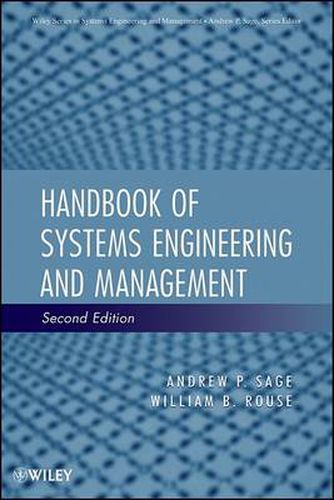Readings Newsletter
Become a Readings Member to make your shopping experience even easier.
Sign in or sign up for free!
You’re not far away from qualifying for FREE standard shipping within Australia
You’ve qualified for FREE standard shipping within Australia
The cart is loading…






This is the trusted handbook - now in a new edition. This newly revised handbook presents a multifaceted view of systems engineering from process and systems management perspectives. It begins with a comprehensive introduction to the subject and provides a brief overview of the thirty-four chapters that follow. This introductory chapter is intended to serve as a ‘field guide’ that indicates why, when, and how to use the material that follows in the handbook. Topical coverage of this book includes: systems engineering life cycles and management; risk management; discovering system requirements; configuration management; cost management; total quality management; reliability, maintainability, and availability; concurrent engineering; standards in systems engineering; system architectures; systems design; systems integration; systematic measurements; human supervisory control; managing organizational and individual decision-making; systems reengineering; project planning; human systems integration; information technology and knowledge management; and, more. The handbook is written and edited for systems engineers in industry and government, and to serve as a university reference handbook in systems engineering and management courses. By focusing on systems engineering processes and systems management, the editors have produced a long-lasting handbook that will make a difference in the design of systems of all types that are large in scale and/or scope.
$9.00 standard shipping within Australia
FREE standard shipping within Australia for orders over $100.00
Express & International shipping calculated at checkout
This is the trusted handbook - now in a new edition. This newly revised handbook presents a multifaceted view of systems engineering from process and systems management perspectives. It begins with a comprehensive introduction to the subject and provides a brief overview of the thirty-four chapters that follow. This introductory chapter is intended to serve as a ‘field guide’ that indicates why, when, and how to use the material that follows in the handbook. Topical coverage of this book includes: systems engineering life cycles and management; risk management; discovering system requirements; configuration management; cost management; total quality management; reliability, maintainability, and availability; concurrent engineering; standards in systems engineering; system architectures; systems design; systems integration; systematic measurements; human supervisory control; managing organizational and individual decision-making; systems reengineering; project planning; human systems integration; information technology and knowledge management; and, more. The handbook is written and edited for systems engineers in industry and government, and to serve as a university reference handbook in systems engineering and management courses. By focusing on systems engineering processes and systems management, the editors have produced a long-lasting handbook that will make a difference in the design of systems of all types that are large in scale and/or scope.